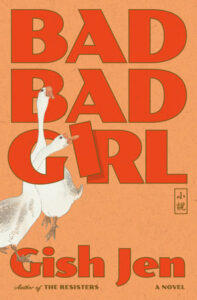In his poem, “Epilogue,” Robert Lowell rues the difficulty of making “something imagined/not recalled.” Famously autobiographical, he laments that
sometimes everything I write
with the threadbare art of my eye
seems a snapshot,
lurid, rapid, garish, grouped,
heightened from life,
yet paralyzed by fact.
He does circle back after a bit to defend his practice, asking, “Yet why not say what happened?”—and arguing that even while sticking to fact, one can still
Pray for the grace of accuracy
Vermeer gave to the sun’s illumination
stealing like the tide across a map
to his girl solid with yearning.
In the mind of this reader, though, it’s not his defense that lingers. It’s his doubt. We can pray, heaven help us, for the accuracy of Vermeer. Yet we may still ask if fact can paralyze.
All these remembrances are motivated, finally, by a desire to save, to whatever extent possible, people and stories and the truth as the authors understand it from impending oblivion.
Graphic memoirist Alison Bechdel does not say exactly that. But in her new book, Spent, she blends fact with fiction in a way she hadn’t previously; and her New York Times interview about this experiment is interesting. “Over the years that I turned myself from being a comic strip writer into a memoirist, I got very sort of self-righteous about memoir as a genre,” she says. “I just thought, why would you bother making anything up? Life is incredible. It’s all right there. It’s served up on a platter every day. Write about that. My friends who are fiction writers would say, You’re able to tell a deeper kind of truth with fiction, don’t you think? And I would agree with them, but secretly I would think, no, you can’t. You’ve got to tell the actual truth. But…after a while, I started to see the merits of fiction—there’s stuff you can do that you can’t when you’re trying to stick to absolute fact. So this was just a very fun, liberatory exercise.”
Liberation seems to have figured, too, in Elizabeth McCracken’s novel about her mother, The Hero of This Book. She advises any prospective memoirist: “Perhaps you fear writing a memoir, reasonably. Invent a single man and call your book a novel. The freedom one fictional man grants you is immeasurable.”As for whether the book is in fact a novel or a memoir, her advice is, “If you want to write a memoir without writing a memoir, go ahead and call it something else. Let other people argue about it.”
It’s advice Michael Ondaatje might have given as well. Running in the Family blends memoir, travelogue, poetry, and fiction, and includes photos as well. In his case, though, the genre bending seems to have been born not so much of liberation as necessity. In the book, he describes returning to his childhood home, Ceylon (now Sri Lanka), with nothing but “the bright bone of a dream I could hardly hold on to.” He spent months there, interviewing family members and retracing his family’s footsteps. But still, the resulting narrative was—had to be—one part invention. “’You must get this book right,’” his brother tells him. “‘You can only write it once.’” But as Ondaatje writes, “There is so much to know and we can only guess”—adding in his Acknowledgments that “while all these names may give an air of authenticity, I must confess that the book is not a history but a portrait or a ‘gesture.’ And if those listed above disapprove of the fictional air I apologize and can only say that in Sri Lanka a well-told lie is worth a thousand facts.”
As for why a well-told lie might be worth a thousand facts, not only in Sri Lanka but elsewhere—might one reason be that factual accounts can’t easily convey the sorts of truths books like Richard Flanagan’s Question 7 seek to represent? Like Running in the Family, Question 7 is in part concerned with the author’s childhood home—in this case, Tasmania, a place where, “there was no straight line of history. There was only a circle…a circle circling within circles.” Flanagan’s daisy-chain of a work suggests that our lives spin out from a physical place, yes, but also from stories, some of them far removed from our own. Observing that a “disappointing reality [can be] reinvented as a fiction that metamorphosed into an unexpected new reality” that in turn shaped us, he is compelled to ask, “Is it because we see our world only darkly that we surround ourselves with lies we call time, history, reality, memory, detail, facts?” At the same time, he does regret that “When I try to recall them my family scatters into shards I cannot hold on to but only occasionally dragoon into parts of a story.” He tries, for example, to recover why his brother, many years earlier, wanted to build a kayak, but finds that his brother, “an old man now…can’t remember anything about his kayak dream.”
In Dear Memory: Letters on Writing, Silence, and Grief, Victoria Chang, too, grapples with lacunae in her family history, writing, “In my case, trying to know someone else’s memories…is a form of grieving.” She further wonders “whether memory is different for immigrants…something to be stopped”—a thing I have wondered, too, my family having been Chinese immigrants like Chang’s and having likewise resisted the act of recollection. Meanwhile, yet another genre-defier, Chang includes images in her book. But hers do not elaborate upon the narrative, like Ondaatje’s. Rather, her photos, documents and collages point to the extreme paucity of surviving evidence and the utter impossibility of a cohesive, factual narrative. “Maybe all of our memories are tied to the memories of others,” she muses—begging the poignant question, “What if my memory and origin can never be pinned down?”
These are finally not snapshots of life; they’re portraits. And as such, their aim is a bit different.
In The Hero of This Book McCracken’s late mother asks, “Why are you writing about me?” To which the author replies, “Because otherwise you’d evanesce, and that I cannot bear.” And of course all these remembrances are motivated, finally, by a desire to save, to whatever extent possible, people and stories and the truth as the authors understand it from impending oblivion. In The End is the Beginning: A Personal History of My Mother, Jill Bialosky ends her largely nonfictional narrative with an account of the happy woman she believes her mother to have once been. This is a construal based on a scrapbook; it is not fact. At the same time, it conveys something vitally important: namely, her understanding of her mother’s life.
Having just written a book in which I likewise extrapolate from the few textual artifacts I have to convey my understanding of my mother’s life and our relationship, I feel a kinship to Bialosky, as well as to the other authors I cite here. I, likewise, have invented scenes that occurred long before my birth. I have filled in gaps in the record, “remembered” things I could not remember, and here and there written what I liked for the sheer fun of writing it. As for whether my effort and theirs might be correctly conflated with the sort of autofiction exemplified by the work of Karl Ove Knausgaard, I believe not. Though these works, like Knausgaard’s, blur genre lines, they have not been written to bare all in a gesture of radical authenticity. Rather, they have been written to capture, somehow, a complicated, fragmentary and/or vanishing story of great importance to the author.
Might the author hope that his or her account, to whatever genre it belongs, will move the reader in a way that mere fact cannot? I do believe so. These are finally not snapshots of life; they’re portraits. And as such, their aim is a bit different. As a portrait painter once told me, “No one ever cries at the unveiling of a photograph. But at the unveiling of a portrait, they cry.”
__________________________________

Bad Bad Girl by Gish Jen is available from Alfred A. Knopf, an imprint of Knopf Doubleday Publishing Group, a division of Penguin Random House, LLC.
